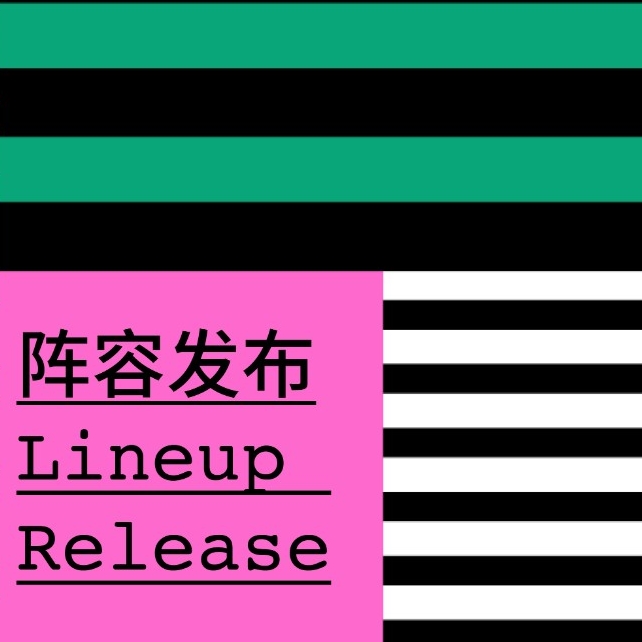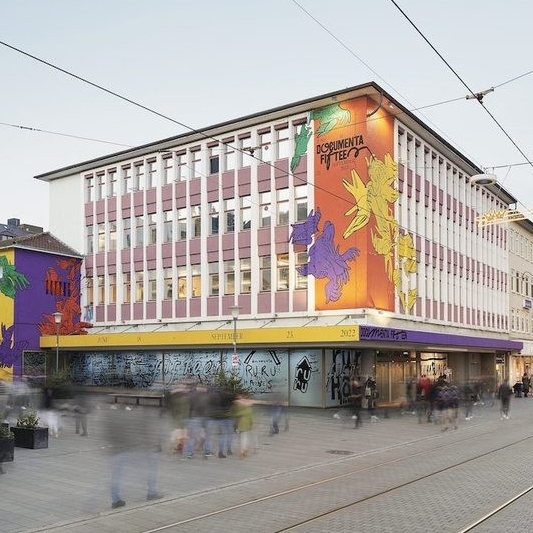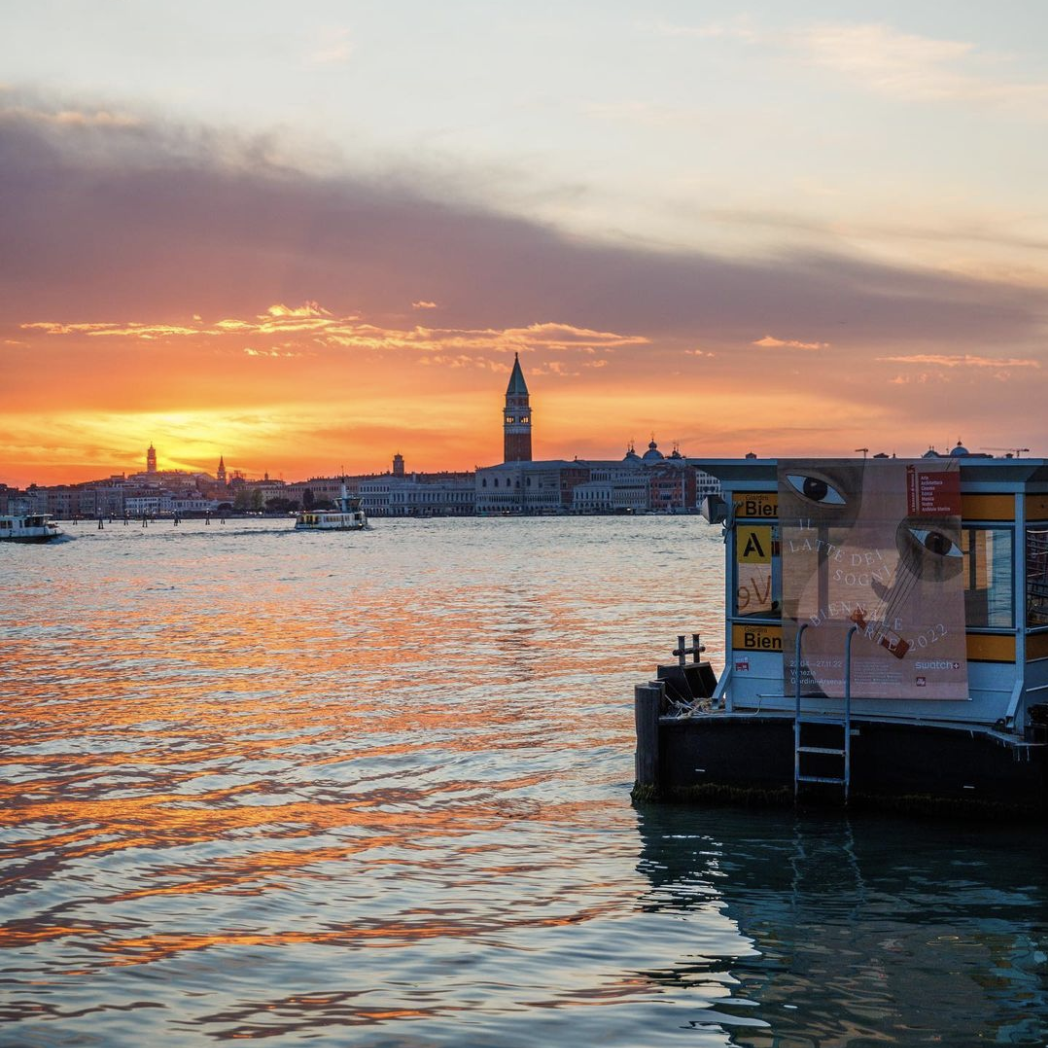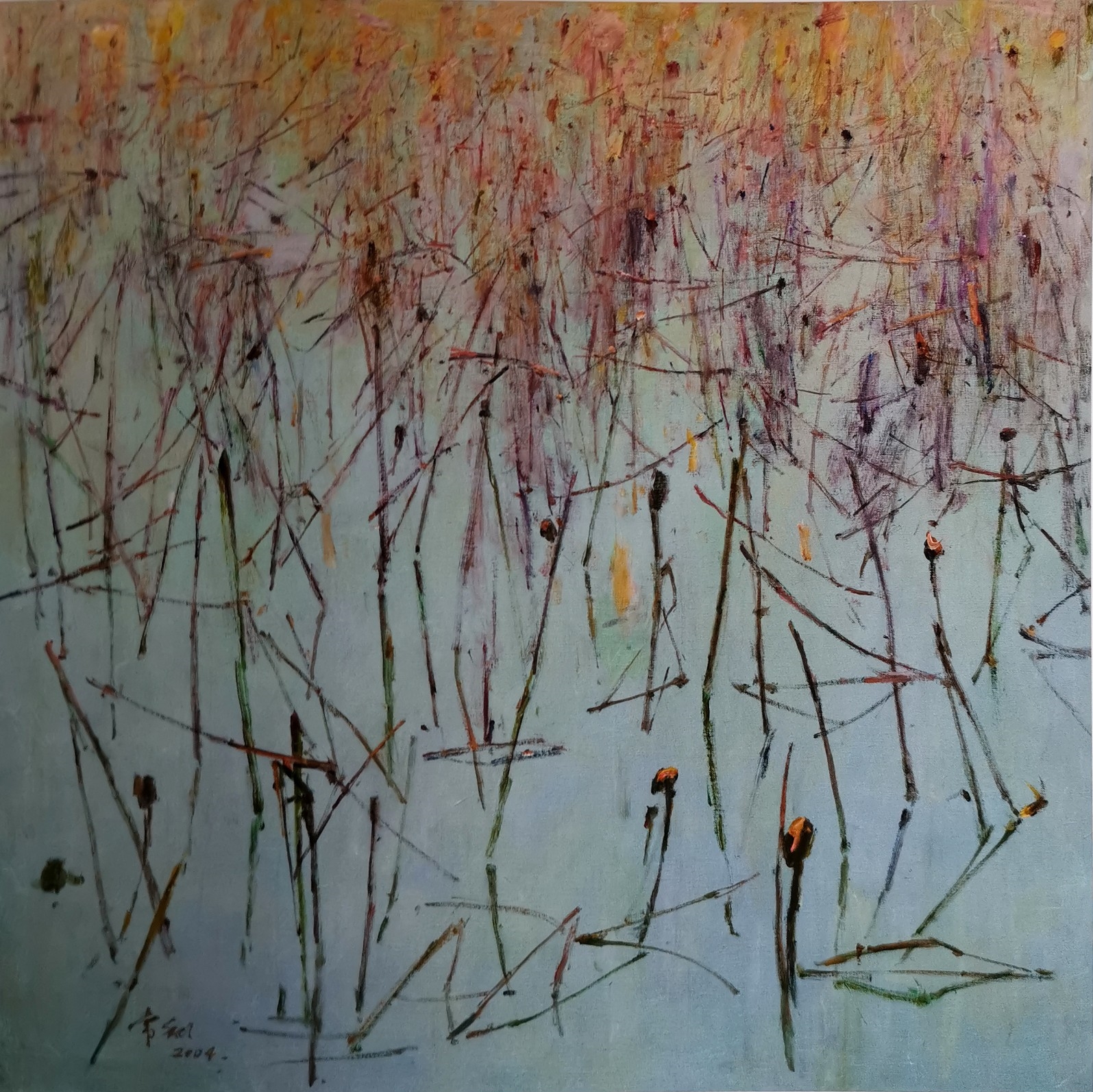
Guan Liang (1900-1986), courtesy name Liang Gong, was born in Panyu, Guangdong Province. He went to Japan in 1917, studying at Kawabata Institution and later at Pacific Art Association. When in Japan, he spent much time studying the works by European modern artists like Monet, Manet, Van Gogh, Matisse and Picasso. After returning to China, he taught at Shanghai Fine Arts School, Shanghai Arts University and the National Academy of Art in Hangzhou. During the period of new China, he served as trustee of China Artist Association, vice chairman of Shanghai Artist Association, researcher of Shanghai Research Institute of Culture and History, professional painter at Shanghai Chinese Painting Institute, professor of Zhejiang Art Academy, director and advisor of the Fine Arts Institute of Shanghai Jiaotong University and committee member of Shanghai Federation of Literary and Art Circles.

Guan Liang, Street of Kunming, 1940

Guan Liang, Characters, 1959
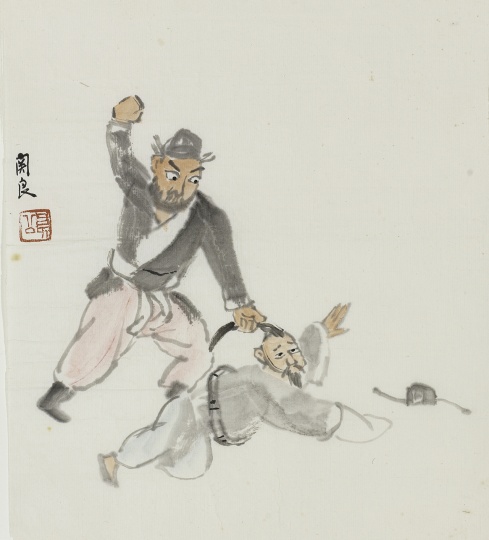
Guan Liang, Da Tanguan, 1960
As one of the first generation of Chinese artists studying abroad, like many others, Guan Liang also chose to integrate into his own practice exaggerated shapes, large areas of contrasting colors by flat brush stroke and simple line drawing that were often seen in Gauguin, Van Gogh and Matisse’s works. Such efforts could be clearly perceived in his earlier works. After returning to China, he started to learn Chinese painting in the 1920s and drew his inspiration from not only modern masters like Wu Changshuo, Qi Baishi, Huang Binhong, Liu Haisu and Pan Tianshou but also ancient masters like Bada Shanren. As a result, he managed to develop a signature style of his own which ingeniously blended Chinese and western techniques and interpreted the spirit of Chinese art with a modern touch, leading to a new chapter in the history of Chinese painting. According to Cheng Shifa, a renowned Chinese painter and cartoonist, Guan Liang was indeed a master that the history of modern Chinese painting could not leave behind. It was him who first introduced concepts of western modern painting into Chinese ink painting and presented the highly acclaimed opera figure series.
When speaking of Guan Liang’s opera figures, the first thing that occurred to people would be series of vividly delineated artistic figures that were full of vigor and fun. These mesmerizing figures skillfully embody the purity, innocence and optimism lying in the nature of Chinese people. The unique sense of Chineseness radiated from the seemingly simple and yet brightly colored figures makes his work a cup of tea that is highly worth taking the time to taste.
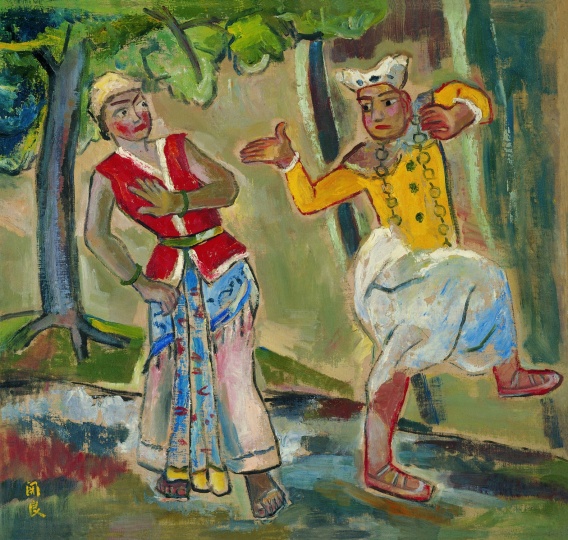
Guan Liang, Dance, 1978
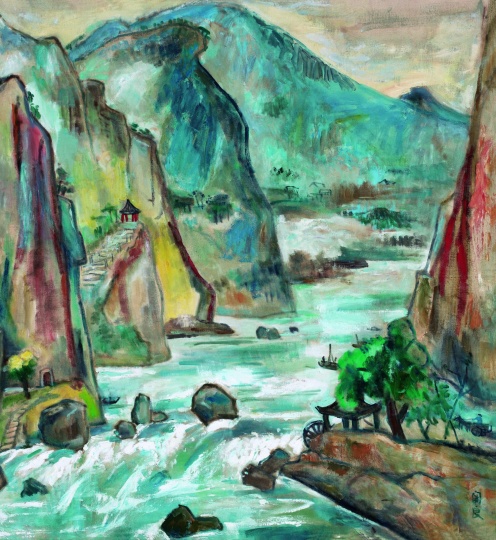
Guan Liang, Shimen, 1978
Featuring more than 200 pieces of Guan Liang’s paintings, the exhibition endeavors to present so far the most comprehensive picture of Guan Liang’s practice and achievements of painting. Covering a wide range of media including oil on canvas, watercolor, ink and brush painting and porcelain plate painting, the exhibits feature not only traditional opera episodes that are familiar to Chinese people but also some of the most widely-known modern Peking operas such as Shajia Village and Tracks in the Snowy Forest. Two major theme lines could be perceived from the exhibition: one is a chronological line, casting light on the development of the artist’s distinct personal style; and the other is subject-based so that viewers could see which types of subjects were repetitively seen in his work. With the intersection of these two theme lines, a picture is therefore unfolded, revealing how the artist’s vision of his art and of the time evolved, and offering new insight into the study of Guan Liang’s art.
About the exhibition
Dates: May 15, 2015 — Aug 8, 2015
Opening: May 15, 2015 17:00
Curator: Wang Wei
Venue: Long Museum West Bund Gallery 6, Long Museum West Bund Gallery 3
Courtesy of the artist and Long Museum, for further information please visit http://thelongmuseum.org.


